As the 2018 FIFA World Cup group stages came to a close, there was still all to play for in Group F as all 4 sides still had the chance progress to the last 16 stage. Mexico sat top of the group and as long as they avoided a heavy defeat and Germany did not defeat South Korea in the group’s other game, they would be through. For the Swedes this game was a must-win. Yes they could still progress if the other game’s result went their way but Sweden manager Janne Andersson knew his men could not afford to leave their fate in the hands of others.
Team News
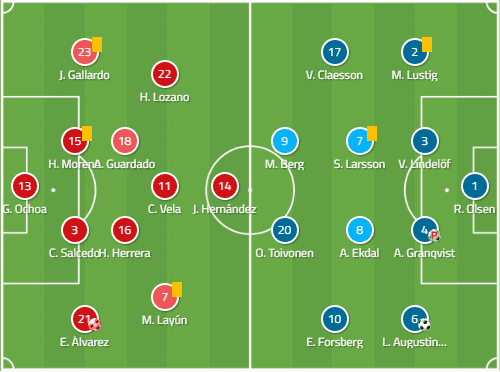
Mexico’s 4-2-3-1 had served Juan Carlos Osorio’s side well thus far in Group F. Their solid defensive organisation and blistering counter-attacks exposed the frailties in the German team as Juan Carlos Osorio’s men ran out 1-0 winners in their first game. Ochoa is an experienced and reliable pair of gloves between the sticks, Guardado will anchor midfield while Hector Herrera is given license to push forward. Carlos Vela and Hirving Lozano are the creative sparks in this side, any goal for El Tri would likely be of their making.
Sweden’s 4-4-2 got the better of Italy in World Cup qualification and has proved by consistent performances that under Janne Andersson the system can be incredibly frustrating for opponents while giving a suitable platform to Sweden’s strongest players. The spine is full of 6 hard-working, disciplined professionals while the team’s creativity comes from their full-backs and wide-midfielders, particularly RB Leipzig’s Emil Forsberg.
Sweden Play Long From the Start
Right from kick-off as the ball was rolled backward to centre-back Granqvist, the entire Sweden midfield and forward line pushed as high up the pitch as they could, mostly over to the right side of the pitch.
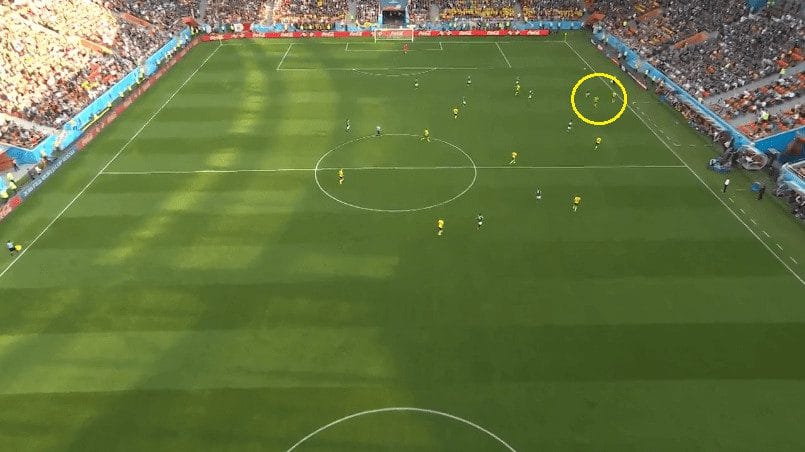
This pass map shows how frequently Sweden utilised their right flank, trying to isolate Berg or Claesson against their smaller markers with many of the passes coming from goalkeeper Olsen.
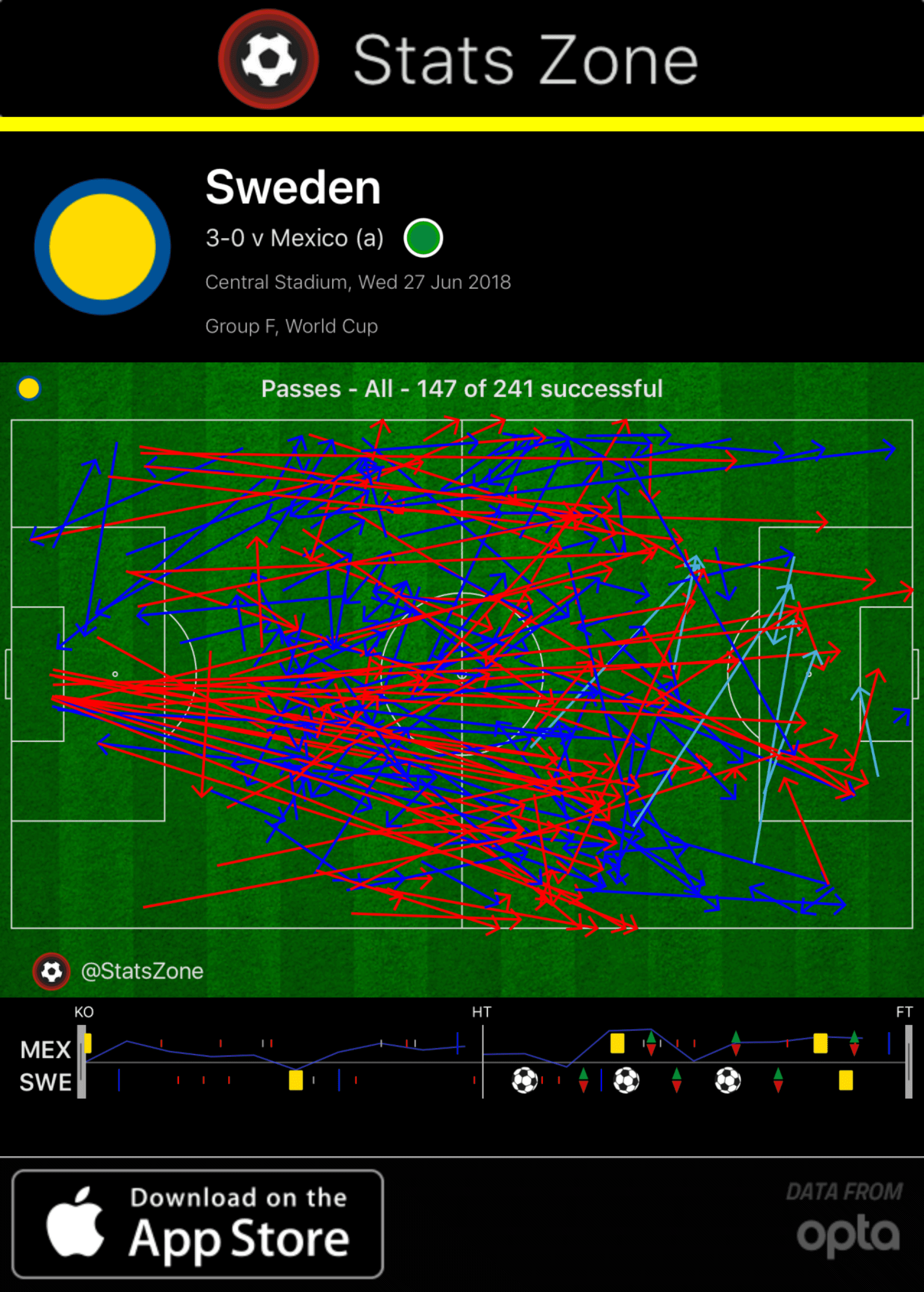
Sweden on average have a far taller side than Mexico and it looked as though they were banking on their aerial superiority to bypass the midfield battle. Mexico have better technicians in their midfield than the Scandinavians and Janne Andersson’s side fancied themselves the more effective team in both boxes and so the Swedish game plan was simple, keep the ball out of midfield.
Mexico Forced to Play Long
Sweden’s game plan would not be as effective if Mexico were allowed play out from the back, Osorio’s side would see far more of the ball and would likely pick holes in the Swede’s block eventually. To stop this, Andersson’s team pressed high when Ochoa was in possession, man-marking 1v1 to force El Tri to go over the press. This played into Sweden’s aerial superiority and Mexico had little joy trying to combat it.

Trying to reach the midfield zone was made harder by Sweden’s shape. Their disciplined 4-4-2 left little space to play between yet Mexico did not have runners stretching Granqvist’s backline.
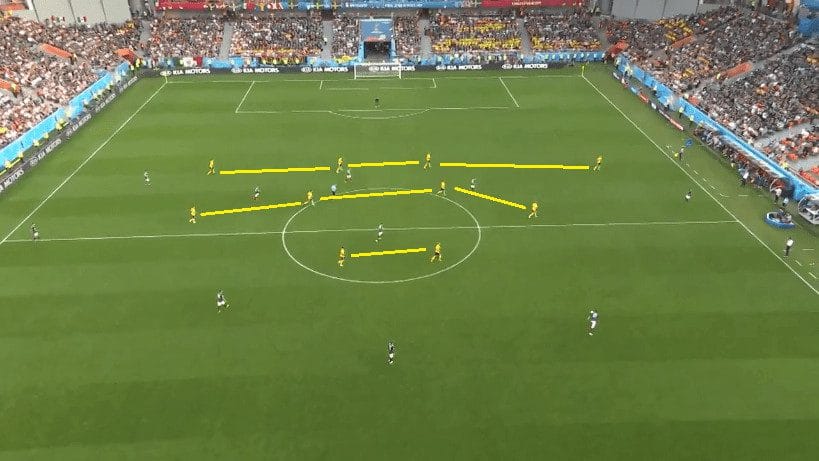
Whenever Mexico managed to keep possession in the midfield, their advances through the centre were shut down by the Swede’s 4-4-2 shape. The compact yellow and blue block forced El Tri to play the ball wide where little options remained but a cross into the box which suited the Swedish centre-backs perfectly. Sweden particularly focused on removing space from Mexico’s wingers when they drifted inside, no wonder as to why given how well the likes have Lozano have played of late.
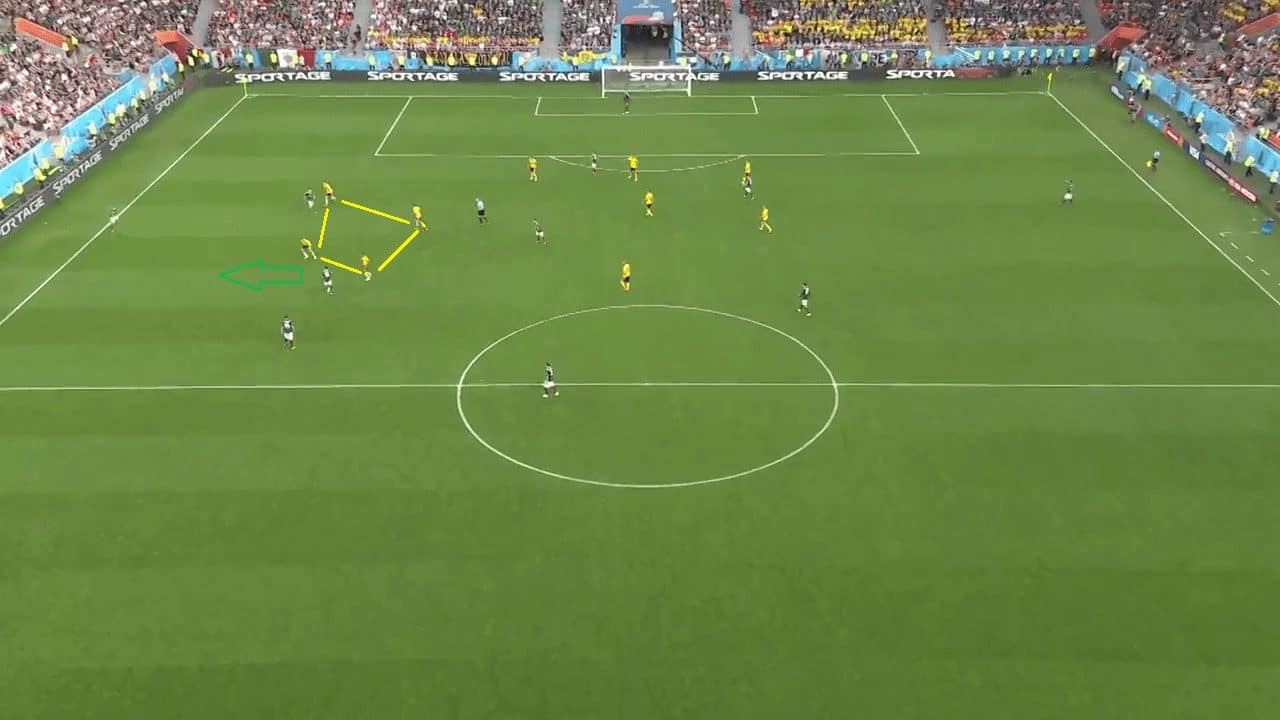
Goals Change Games
Sweden’s opening goal came in the 50th minute after their 4-4-2 press cut off passing lanes for the Mexicans and with little supportive movement from their midfield, the defenders lost possession trying to play through the middle of the pitch. Sweden recovered the ball and found an outlet in right-back Lustig. Lustig again went long and the Swedish forwards made the ball stick, moving the Mexican’s back inside their own box. When Berg received the ball wide right, his ensuing cross cut through the gap between back 4 and their midfield, leaving space for Claesson to mishit and subsequently find the fortuitous Augustinsson whose strike bettered Ochoa.
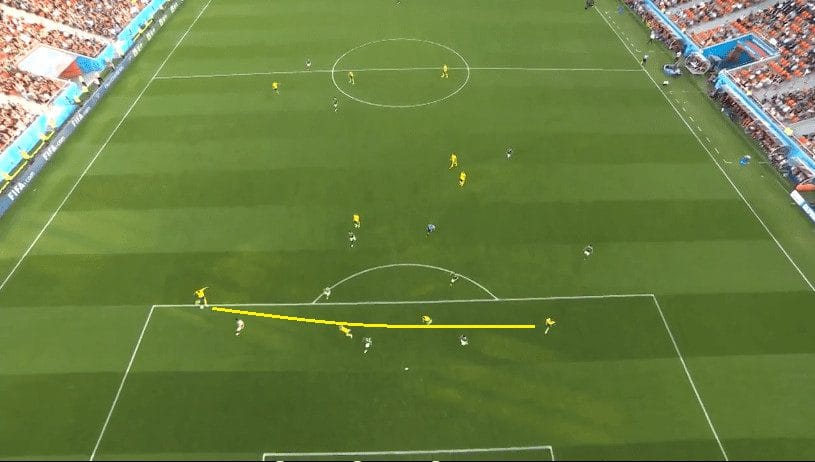
Sweden kept up their game plan after their first strike, keeping the ball in the air and in the Mexican defensive zones. Defensively their narrow 4-4-2 (sometimes a 4-1-4-1 when Toivonen dropped) shut down the Mexican attack and Sweden looked to counter quickly when possession was won. Mexico seemed to lose their shape a bit after the game’s first goal and when the El Tri midfield was caught napping on the ball, the Swedes flooded forward and won themselves a penalty.

The third arose from another instance of physical prowess for the Swedes as a long throw caused havoc in the Mexican penalty area. Substitute Isaac Thelin won his aerial battle and while Toivonen attacked the ensuing flick-on, an unlucky Alvarez deflected the ball into his own net.
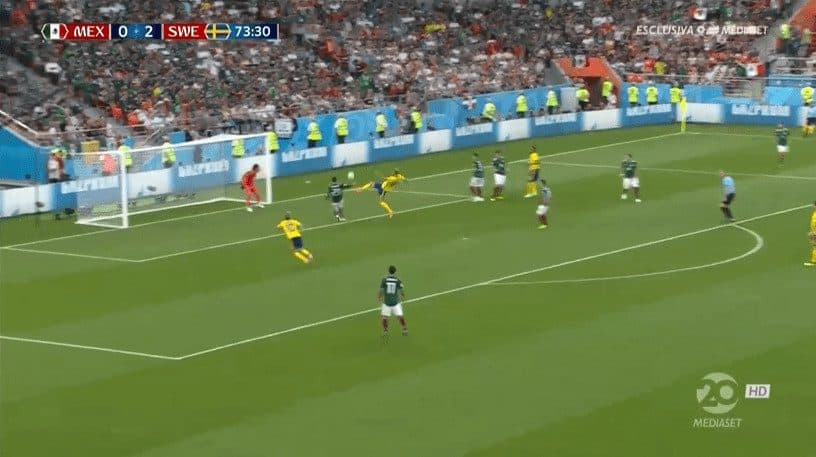
Conclusion
Overall the Swedes had more energy and belief in what they were doing than their Mexican opponents. Sweden have a very well organised defence and shut down the Mexican attack repeatedly, usually having forced El Tri wide of their low-block. The first goal changed the game, Mexico became a little desperate for an equaliser while Sweden displayed all the patience and discipline that got them to this World Cup in an unlikely fashion. Janne Andersson’s men stuck to their strengths by making the game a physical one when in possession while cleverly stifling Mexican advances through the centre of the pitch defensively.
Mexico perhaps could have altered their pressing approach, closing down the Swedish defenders when they looked to play long. This would have given Mexico a far better chance of winning the ball higher up the pitch, allowing their superior passers in midfield to dictate proceedings. Instead, Mexico sat off the Swedes, dropping back as if to invite the long ball, perhaps to create space behind the high Swedish defensive line to exploit through their pacey forwards. Juan Carlos Osorio’s men never looked on their game in this match but El Tri were luckily through to the next round thanks to South Korea’s efforts against Germany.





Comments